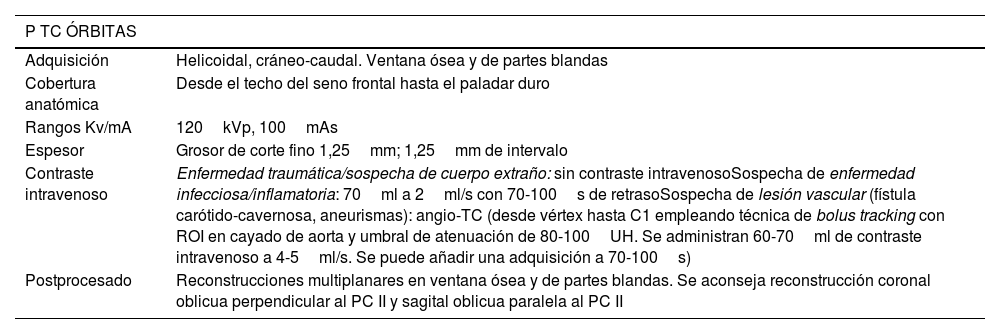La enfermedad oftálmica urgente se puede agrupar en 4 categorías: infecciosa, traumática, vascular e inflamatoria. Las técnicas de imagen juegan un papel fundamental en su diagnóstico, lo que posiciona al radiólogo en el primer eslabón de estas entidades. La TC suele ser la técnica de elección dentro del contexto urgente, presentando la RM y la ecografía un papel secundario. Los radiólogos debemos estar familiarizados con los principales hallazgos de imagen de estas afecciones para poder realizar un diagnóstico rápido y preciso que contribuya a la buena evolución del paciente. Este artículo repasa la anatomía orbitaria, las técnicas y protocolos de imagen que se deben emplear, así como las claves diagnósticas que todo radiólogo debe conocer.
Urgent ophthalmic pathology can be grouped into 4 categories: infectious, traumatic, vascular, and inflammatory. Imaging techniques play a fundamental role in their diagnosis, positioning the radiologist at the forefront when dealing with these entities. CT is usually the technique of choice within the emergency context, with MRI and ultrasound playing a secondary role. Radiologists must be familiar with the main imaging findings of these pathologies to make a rapid and accurate diagnosis that contributes to a positive outcome for the patient. This article reviews orbital anatomy, imaging techniques and protocols that should be employed, as well as key diagnostic clues that every radiologist should know.



























